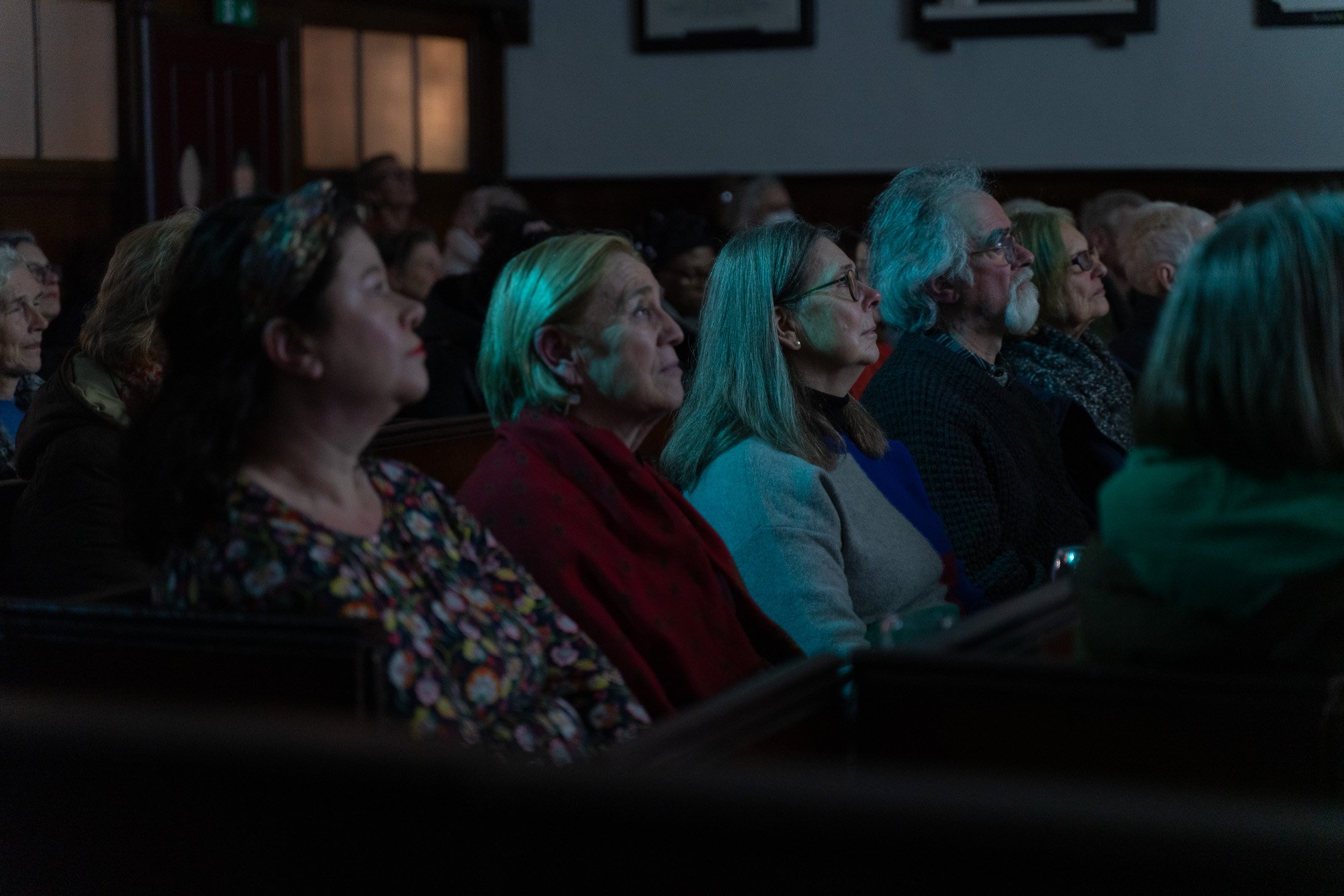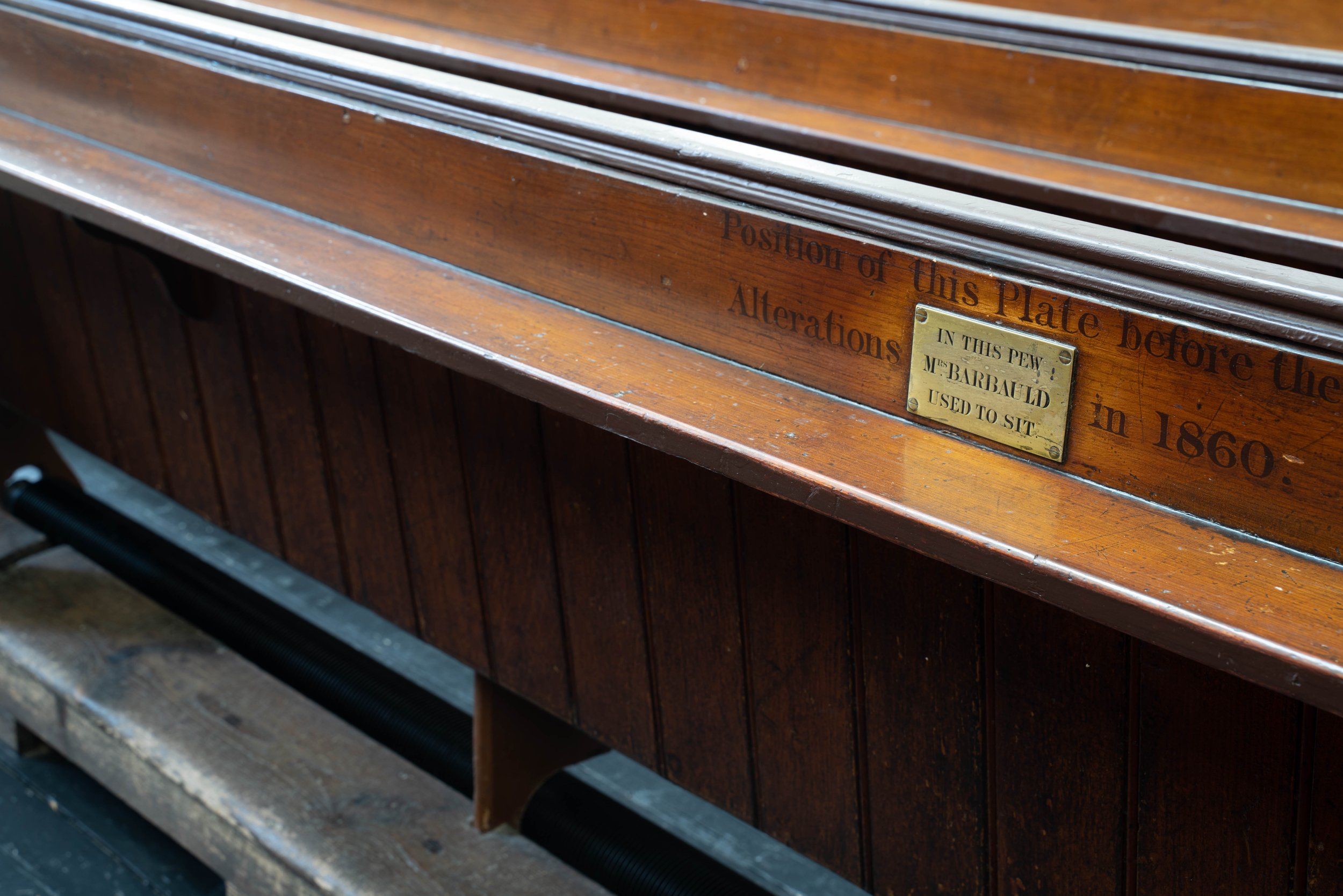Dissent is what we do
For three hundred years, the Meeting House on Newington Green's northern edge has been at the forefront of efforts to create a more inclusive and just society. It’s London's oldest Nonconformist place of worship to still be in use.
In the eighteenth century, the building’s radical Dissenters – like Mary Wollstonecraft and Richard Price – were among the earliest voices in the country to fight for the rights of women, democratic freedoms, and the end of slavery.
In the late twentieth century, New Unity (the building’s modern-day Unitarian community, which welcomes non-religious and religious people alike) relentlessly pushed for the equality and expression of LGBTQ+ people.
And in this century, its members are organising to reverse climate change and undo systemic racism and social injustice in London and beyond. Arts on the Green is our latest mission in a centuries-old struggle to bring radical ideas to this place. We exist to provide flexible space to radical arts practitioners bringing high quality culture to our community.

Our heritage informs our future
From Newington Green to the world beyond
We want to empower people to use the Meeting House as a hub for radical arts, learning and culture initiatives. We want the building to continue to be a resource for people to start to create the change they want to see in North London and the wider world – just as it always has been.
Putting the building’s use value first
We’re lucky to own the freehold of a flexible, recently- renovated historic building in a prime location. We want to radically share it – and allow creative, concerned citizens from all parts of our rich patchwork of local communities to access it.
Following in the footsteps of Dissenters
We believe that shared artistic or creative experiences have always been essential for collective belonging. Unitarians and Dissenters have performed, studied and dreamt in our Meeting House for centuries, doing the work of building a better future through art.

We launched in September 2024
Starting in a strong position for growth
Between 2018 and 2023 the Meeting House ran a successful heritage project funded by the National Lottery Heritage Fund. This fuelled a resurgence of interest in the building’s history as a hub for arts and culture – and we’re moving from there as we launch.
Funded by members, donors and attendees
Right now, we’re funded through a mixture of New Unity’s operational funds (raised through its membership and rentals), early box office revenue from small-scale arts events, and unrestricted gifts received in recent years. We’re actively working on a fundraising plan.
Proudly run and supported by New Unity
We were founded in summer 2024 by Sue Morrison (chair of New Unity’s trustees), Vick Ryder (vice chair), Bérénice Guyot-Réchard (trustee) and Nick Toner (General Manager). New Unity is a registered charity; its accounts are independently examined and published.
A story of radical Dissent right here in Newington Green
From open fields to Dissenting suburb
The Meeting House on Newington Green was built in 1708, but the story begins sixty or so years earlier, in the aftermath of the Civil War, when Newington Green became the nucleus of a distinct dissenting community. By the 18th century, Richard Price – philosopher, political theorist, mathematician and Royal Academician – was preacher. He lived at 54 Newington Green, which – along with its neighbours – forms the oldest surviving brick terrace of houses in London. He formed friendships with many of the leading intellectuals of his day, including the feminist Mary Wollstonecraft and the scientist and founding father of the United States, Benjamin Franklin.
The village that changed the world
In the twentieth and twenty-first centuries the congregation’s drive for social justice continued with inter-faith projects in the 1950s and the campaign for equal marriage rights in recent years. Today the Meeting House is an intriguing and unusual space: a place of worship with an inclusive message, where many congregants do not believe in God; a place of historic significance that is forward-looking and strongly engaged with social justice. There are many draws for the curious visitor – international connections, local history, and a modern-day place of worship whose rationale is unique by being radically inclusive.
